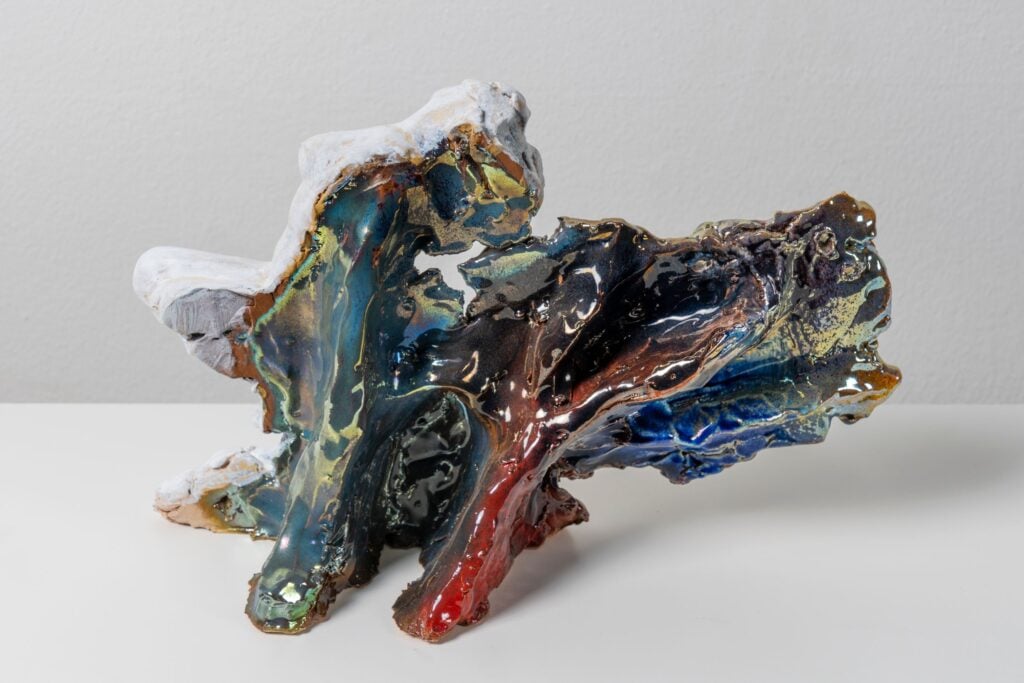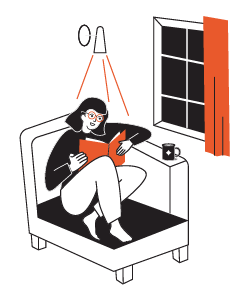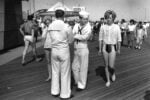Fontane Animali Cowboys

Mostra collettva.
Comunicato stampa
Stefania Carlotti modella in ceramica immagini che hanno il sapore dei vecchi film western. All’interno delle sue sceneggiature i personaggi sono cowboys goffi ed impacciati, figure in bilico, colte nell’istante prima di una disavventura incombente, immortalati al di sotto di una lucida patina smaltata in forma di anti-eroi. Con ironia tagliente ci racconta, attraverso precise inquadrature, di un immaginario sospeso tra tensione e spaesamento, fatto di imprevisti al bancone di un bar, di duelli e sparatorie, di cuori spezzati e di amori già finiti.
Stefania Carlotti creates ceramic pieces that evoke the atmosphere of old Western
films. Within her narratives, the characters are clumsy and awkward cowboys, figures on the edge, captured in the moment just before an impending misadventure. They are immortalized beneath a glossy, glazed surface in the form of anti-heroes. With sharp irony, she tells us through precise framing of an imaginary world suspended between tension and disorientation, filled with unforeseen events at a bar counter, duels and shootouts, broken hearts, and loves already lost.
Testo di / Text by Veronica Recchia e Lorenzo Pagliani
La ceramica è il punto in cui terra e acqua si incontrano, consente il plasmare che, nel caso di Cucchi, equivale a disegnare. E il disegnare, se un artista fosse una fontana, sarebbe lo zampillo, o il getto d’acqua, o i mille rivoli con cui le chimere, le visioni, le baluginanti e inarrestabili mutazioni formali affiorano dal bacino buio, sotterraneo e fremente, dell’immaginazione, della memoria, del visto e del solamente sospettato o intuito. Lì, in quella pozza
profonda e immensa senza rive e senza tempo, si sono riversate attraverso l’occhio tutte le forme viste, tutti gli stili appresi, continuamente ibridandosi nervosi in attesa che la mano le faccia uscire alla luce.
Ceramics is the point where earth and water meet, allowing for shaping, which, in
Cucchi’s case, is akin to drawing. And drawing, if an artist were a fountain, would be the spurt, or the stream of water, or the thousand rivulets through which chimeras, visions, and the fleeting and unstoppable formal mutations emerge from the dark, subterranean, and simmering basin of imagination, memory, the seen, and the merely suspected or intuited. There, in that deep and immense pool, without shores and without time, all the forms seen, all the learned styles, have poured through the eye, constantly hybridizing nervously, waiting for the hand to bring them to light.
Testo di / Text by Mario Finazzi
“...Gli animali di maiolica di Fancello han tutti origine marina. Non sembrano usciti da mani, bensì devoluti dall’onda, grafiti dalla rena, assottigliati e arricciolati dal vento, e per miracolo desti su un lido deserto; fatti, insieme, d’acqua, di sale, di rena, di madrepora, affiorano, in forme distinte soltanto per il gesto già vivo, animalescamente vivo: fossili appena nati, li diresti, ancor umidi della creazione. Hanno la magica verità delle macchie d’umido sui muri e delle nuvole nel cielo, dove nell’informe, senti colta un’idea viva.”
“...The majolica animals of Fancello all have a marine origin. They do not seem to have been crafted by hands, but rather bestowed by the wave, etched by the sand, thinned and curled by the wind, and, by some miracle, awakened on a deserted shore; made, all together, of water, salt, sand, and madreporic coral, they emerge, distinct only in their already living gesture, animalistically alive: newly born fossils, one might say, still damp from creation. They possess the magical truth of wet stains on walls and clouds in the sky, where in the amorphous, you feel a living idea is captured.”
Testo di / Text by Lisa Ponti, “Stile”, n.16, aprile 1942
Stefania Carlotti (*1994, Italia) vive e lavora tra Losanna e Parigi.
Stefania ha conseguito un Master in Arti Visive presso l’Ecole Cantonale d’Art de Lausanne, ECAL, a Losanna (CH) e in precedenza ha ottenuto un diploma BA in Arti Visive presso la Nuova Accademia di Belle Arti, NABA, a Milano (IT). Tra le mostre recenti in cui è stato esposto il suo lavoro: 2025 - Grand Buffet, Toast project, Firenze; 2024 - Greatest Hits, Tunnel Tunnel, Losanna; NOI SPARIAMO, Galleria ZERO... Milano; Great Expectations, Café des Glaces, Tonnerre; 2023 - The Loss Theme, Lokal-int, Bienne; 2021- VITA-MINE, Sonnenstube, Lugano; Primary domain, ORDET, Milano.
Parallelamente alla sua pratica artistica, Stefania è co-fondatrice dal 2021 dell’artist-run-space 13 Vitrine per il quale cura la programmazione artistica insieme a Margaux Dewarrat.
Stefania Carlotti (*1994, Italy) she lives and works between Lausanne and Paris.
Stefania attended a Master’s degree in Visual Arts from Ecole Cantonale d’Art de Lausanne, ECAL, in Lausanne (CH) and previously obtained a BA degree in Visual Arts from Nuova Accademia di Belle Arti, NABA, in Milan (IT). Recent exhibitions in which her work has been included: 2025 - Grand Buffet, Toast project, Florence; 2024 - Greatest Hits, Tunnel Tunnel, Lausanne; WE SHOOT, Gallery ZERO... Milan; Great Expectations, Café des Glaces, Tonnerre; 2023 - The Loss Theme, Lokal-int, Biel; 2021- VITA-MINE, Sonnenstube, Lugano; Primary domain, ORDET, Milan. In parallel to her artistic practice, Stefania is co-founder since 2021 of the artist-run-space 13 Vitrine for which she curates the artistic programming together with Margaux Dewarrat.
Enzo Cucchi (Morro d’Alba, 1949) vive e lavora a Roma.
Dopo una formazione da autodidatta è tra i protagonisti della Transavanguardia. A partire dalla Biennale di Venezia del 1980 il suo lavoro ha ottenuto un enorme riconoscimento a livello internazionale con mostre personali in alcuni dei più importanti musei del mondo quali la Kunsthaus Zurich (Zurigo, 1982), il Museum Folkwang (Essen, 1982), lo Stedelijk Museum (Amsterdam,1983), il The Institute of Contemporary Art (Boston, 1984), il Solomon R. Guggenheim Museum (New York, 1986), il Musée national d’art modern Centre George Pompidou (Parigi, 1986), la Städtische Galerie im Lenbachhaus (Monaco, 1987), il Museo d’arte contemporanea Luigi Pecci (Prato, 1989), l’Hamburger Kunsthalle (Amburgo, 1992), il Castello di Rivoli (Torino, 1993), la Galleria Nazionale d’Arte Moderna (Roma, 1998), il Tel Aviv Museum of Art (Tel Aviv 1999 e 2001), Villa Medici (Roma, 2006) e il MAXXI (Roma, 2023).
Enzo Cucchi (Morro d’Alba, 1949) lives and works in Rome.
After training as a self-taught, he is one of the protagonists of the Transavanguardia.
Beginning with the Venice Biennale in 1980, his work gained enormous international recognition with solo exhibitions in some of the world’s most important museums such as Kunsthaus Zurich (Zurich, 1982), Museum Folkwang (Essen, 1982), Stedelijk Museum(Amsterdam,1983), The Institute of Contemporary Art (Boston, 1984), Solomon
R. Guggenheim Museum (New York, 1986), Musée national d’art modern Centre George Pompidou (Paris, 1986), Städtische Galerie im Lenbachhaus (Monaco, 1987), Museo d’arte contemporanea Luigi Pecci (Prato, 1989), l’Hamburger Kunsthalle (Hamburg, 1992), Castello di Rivoli (Turin, 1993), Galleria Nazionale d’Arte Moderna (Rome, 1998), Tel Aviv Museum of Art (Tel Aviv 1999 and 2001), Villa Medici (Rome, 2006) and MAXXI (Rome, 2023).
Salvatore Fancello (Dorgali, 1916 - Bregu Rapit, 1941) nella sua breve e fulminante carriera ha lasciato una traccia indelebile nella storia dell’arte italiana del novecento. Talento precocissimo, nel 1930 dopo aver vinto una borsa di studio si trasferisce a Monza per studiare all’ISIA (Istituto Superiore per le Industrie Artistiche) mentre dal
1938 inizia a produrre presso il laboratorio dei ceramisti Tullio e Giuseppe Mazzotti ad Albissola. Il suo lavoro ha immediatamente destato l’interesse di personaggi quali Giulio Carlo Argan, Cesare Brandi, Gio Ponti e Leonardo Sinisgalli. Le sue opere sono state esposte in rassegne quali la VI Triennale di Milano (1936) e la XXIV Biennale di Venezia (1948), oltre ad essere state oggetto di importanti retrospettive alla Pinacoteca di Brera (1942) e al Museo Nivola (2016).
Salvatore Fancello (Dorgali, 1916 - Bregu Rapit, 1941) in his short and fulminating career left an indelible mark on the history of 20th-century Italian art. In 1930 he moved to Monza to study at ISIA (College of Artistic Industries), while from 1938 he began working with Tullio and Giuseppe Mazzotti in Albissola. His work immediately awake the interest of several intellectual as Giulio Carlo Argan, Cesare Brandi, Gio Ponti and Leonardo Sinisgalli. His works have been shown in exhibitions such as the VI Milan Triennale (1936) and the XXIV Venice Biennale (1948), as well as being the subject of important retrospectives at the Pinacoteca di Brera (1942) and the Nivola Museum (2016).



